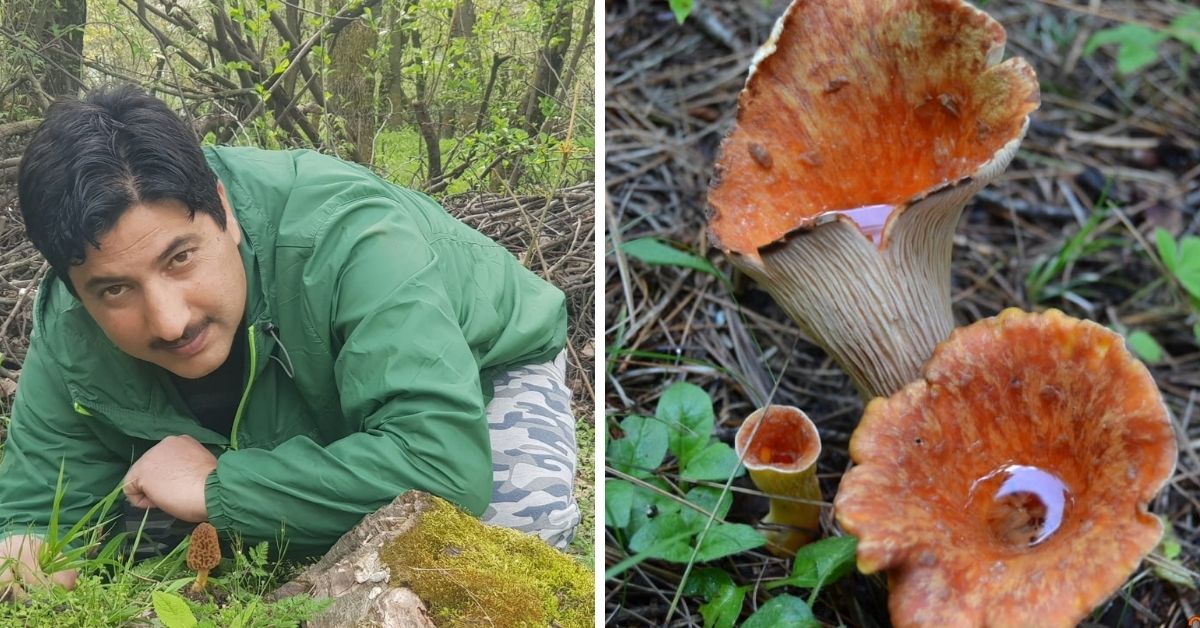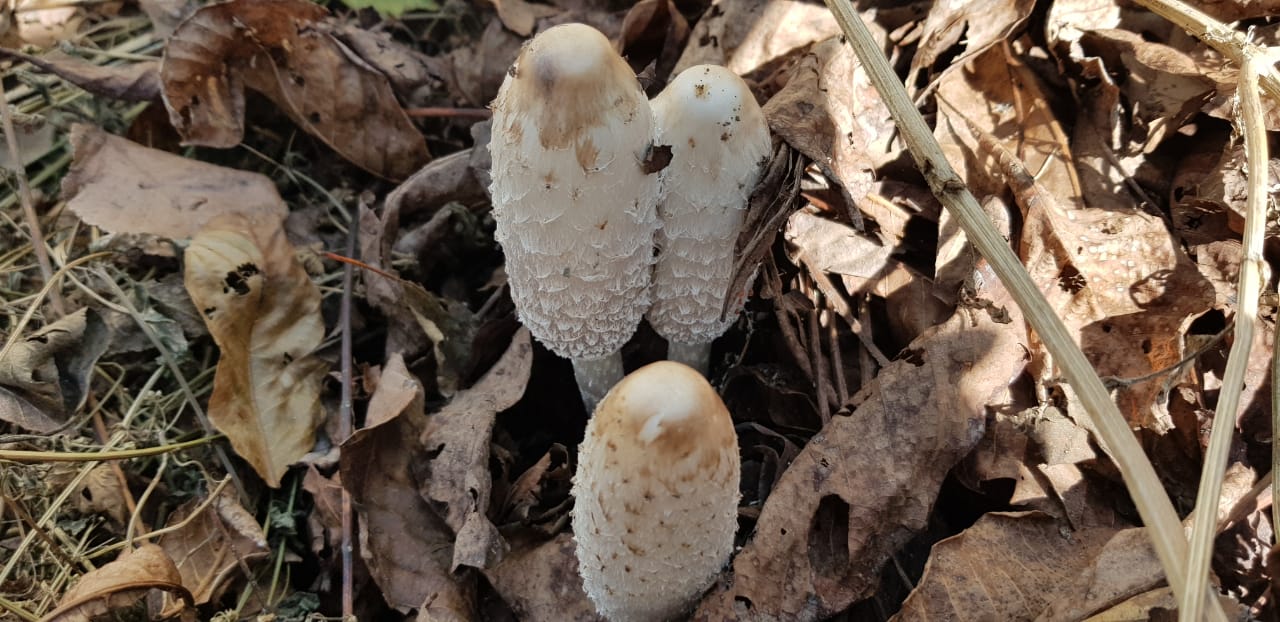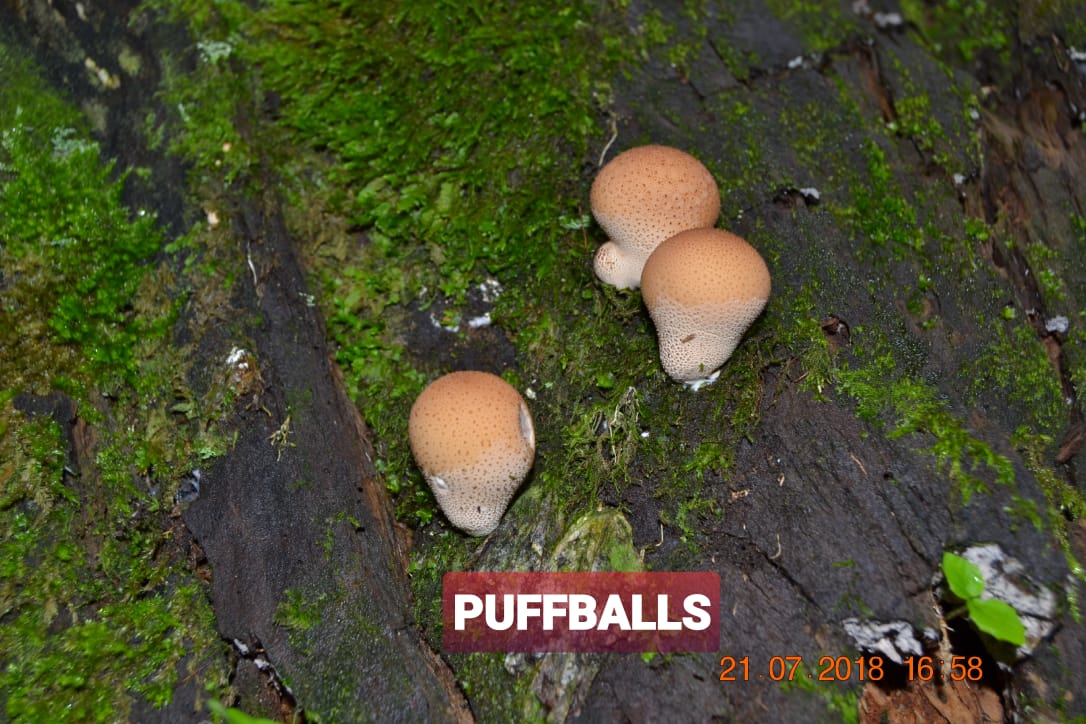Over 20 Years, This Prof Has Identified 100 Little-Known Mushroom Varieties In Kashmir
Kashmir botany teacher Dr Rouf Hamza Boda has spent decades documenting 100 mushroom varieties in the valley. From Gucci to oyster, here are five varieties of the fungi which have a host of health benefits to offer.

It took Dr Rouf Hamza Boda close to 20 years to complete his pet project of identifying 100 types of mushrooms across Jammu and Kashmir. The botany teacher from Anantnag, who is presently teaching at the Government Higher Secondary School in Verinag, says that his aim is to detail how mushrooms can be a stable source of income.
“There are more than 500 species that grow in forests, mountains and soil across the state,” says Dr Rouf, who did his PhD thesis on the nutritional and medicinal value of mushrooms at the University of Kashmir. “All the species that I identified are fungi in nature. I have documented each mushroom’s nutritional value, texture, cultivation pattern, and category. With many people dabbling in backyard cultivation, the aim was to raise awareness about different types of mushrooms.”

He adds that there are several health benefits of eating mushrooms.
“They have active polysaccharides that can fight infections. Vitamin B and selenium make your immune system stronger and prevent cell and tissues damage. They have low calories and are packed with fibre, minerals and vitamins,” he tells The Better India.
In 2019, Dr Rouf had preserved dried mushrooms in polythene in his laboratory before going on a 10-day vacation. On returning, he found that polythene now had pores in it. Adding to his surprise, he found a few insects and their eggs as well.
“If the insects made the holds and escaped, it proves that they contain the innate property to eat polythene. Since I was not sure, I conducted another experiment and found similar results. Insects can grow on mushrooms and degrade plastic. This information can be used further to bring solutions to plastic waste generation,” he adds.
Dr Rouf shares details about five edible mushrooms with high nutritional values, and also spills some interesting trivia.
Gucci mushrooms
Besides being among the world’s most expensive mushrooms, Gucci is rich in minerals, iron, copper, and Vitamin D, and, hence, is highly valued across the world. It can cost up to Rs 40,000 per kilo.
Gucci belongs to the family of Morchellaceae.
“Often called the ‘vulture’ of fungal food, these are low in carbohydrates and are recommended to diabetic patients. They maintain cholesterol and bone health. They are also rich in proteins and form a healthy substitute for meat,” says Dr Rouf.
Inky Cap Mushrooms (Coprinopsis atramentaria)

High in protein, minerals, and Vitamin D, these can be consumed with vegetables, in powder form, or by frying in oil. However, they can prove to be fatal if alcohol is consumed before and after ingesting them, Dr Rouf warns.
Puffball Mushrooms

“Puffballs are among the many mushrooms that hold high medicinal values. Due to their high iron content, they can be used to cure anaemia and wounds. They grow in the spring season and are usually cooked with tomatoes,” says Dr Rouf.
The mushrooms can also aid weight loss, control cholesterol and maintain cardiovascular health.
Dingri or Oyster Mushrooms
The fan-shaped mushrooms grow on lawns and sawdust and are seen abundantly in Kashmir. “They have antioxidant, antiviral and antibacterial properties, alongside fibre, vitamins and minerals,” he adds.
Bolete mushrooms
Bolete are companion mushrooms that grow near or around pine trees. Dr Rouf says they help fix nitrogen around the roots of trees. In return, pine trees absorb the water from the mushroom and provide nutrients to the fungi.
“Boletus are loaded with minerals such as selenium, manganese, zinc, copper, iodine, and molybdenum. They also have calcium and phosphate,” says Dr Rouf.
Source
Edited By Divya Sethu
If you found our stories insightful, informative, or even just enjoyable, we invite you to consider making a voluntary payment to support the work we do at The Better India. Your contribution helps us continue producing quality content that educates, inspires, and drives positive change.
Choose one of the payment options below for your contribution-
By paying for the stories you value, you directly contribute to sustaining our efforts focused on making a difference in the world. Together, let’s ensure that impactful stories continue to be told and shared, enriching lives and communities alike.
Thank you for your support. Here are some frequently asked questions you might find helpful to know why you are contributing?


This story made me
-
97
-
121
-
89
-
167











